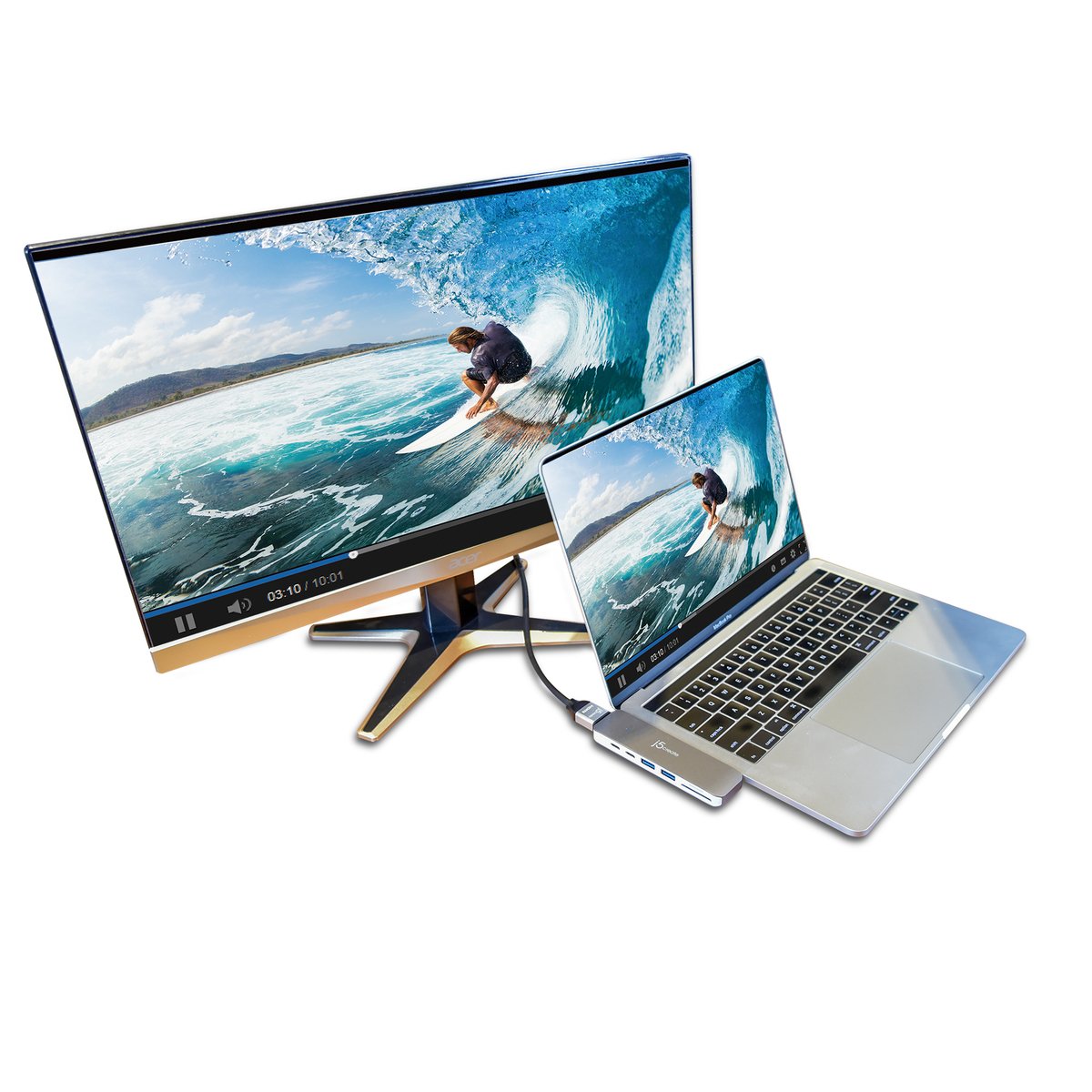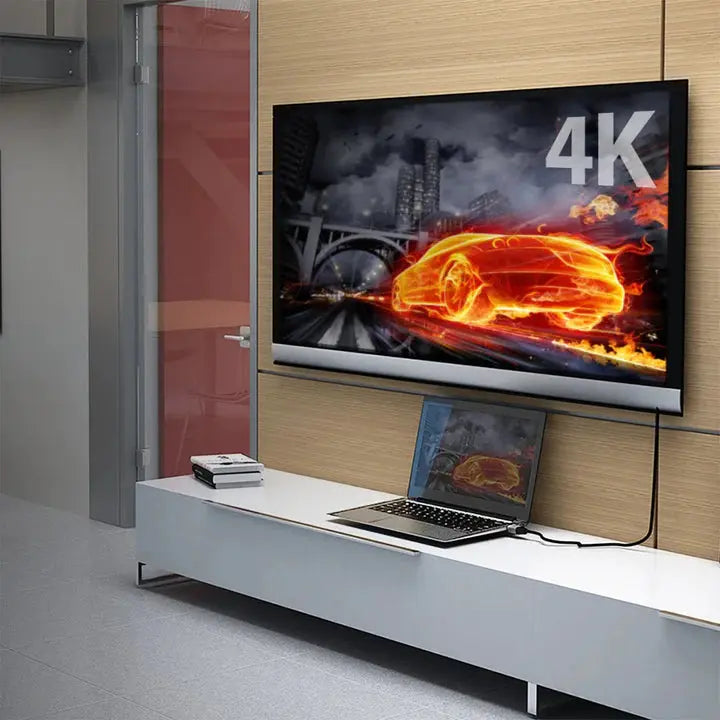Here's how to pick the right Docking Station for your requirements?
A docking station converts your laptop into a full desktop workstation, allowing you to plug in additional monitors, keyboards and mice, printers, speakers, wired networks, and more. Choosing the right one can increase your productivity and efficiency while reducing clutter on your desk.
When choosing a docking station, you should start by looking at its technical specifications. Make sure that it meets the port requirements of your computer. Also, consider the docking station’s design and size. Typically, it is a horizontal design that can fit on any worktable.
Depending on the type of work you do, you might want to pay attention to the docking station’s audio output. You may need it to support your headphones or external speakers. In addition, you should know if the docking station supports video output. Some models offer dual 4K displays, whereas others only support one display and lower resolutions.
If you want to use your laptop while charging it, you should choose a model with USB-C Power Delivery compatibility. It offers up to 240W of power and allows devices to negotiate for the amount of juice they need.
The Benefits of a Docking Station
Unplugging and replugging devices into your laptop can quickly become a hassle. Docking stations offer a solution by expanding your laptop's connectivity options, minimizing the need for multiple adapters and dongles. Not only can they help you connect peripherals more conveniently, but they might even allow you to opt for a laptop with fewer built-in ports, making your portable computing experience sleeker and more manageable.

Understanding Different Docking Station Types
In the past, proprietary docking stations were the norm, requiring a specific connection to your laptop. Nowadays, the focus has shifted to universal docking stations that utilize USB and Thunderbolt ports. These modern docks simplify the process by relying on a single cable connection to your laptop. Some even offer the added convenience of powering your laptop through the same cable.
Factors to Consider When Choosing a Docking Station
Selecting the right docking station involves considering several crucial factors. Let's break down the key points you should keep in mind:
-
Port Selection: Matching the types and number of ports on the dock to your device's needs.
-
Video Output: Ensuring the dock supports the resolution and number of displays you require.
-
USB vs. Thunderbolt: Understanding the benefits and limitations of USB and Thunderbolt connections.
-
Compatibility with Your Laptop: Choosing a dock that's compatible with your laptop's ports and capabilities.
-
Power Delivery: Determining if the dock can power and recharge your laptop.
-
Form Factor: Deciding between stationary and portable docks based on your usage.
-
Monitor Support: Making sure the dock and laptop support your external monitors' specifications.
-
Convenience Features: Checking for features like wake-from-sleep support and cable length.
Choosing Ports for Your Docking Station
The availability and variety of ports on a docking station play a crucial role in your decision-making process. Consider your regular usage and the types of devices you connect to your laptop. Ensuring compatibility with your peripherals and the ability to connect everything simultaneously can save you from frequent cable swapping.

USB vs. Thunderbolt: Which Connection is Right for You?
Universal docking stations often utilize USB or Thunderbolt connections. While Thunderbolt docks tend to be more versatile and powerful, they come at a premium due to licensing costs. USB docks are more budget-friendly and may suit your needs if you don't require the highest bandwidth for storage drives and monitors.
Picking the Perfect Dock for Your MacBook
When selecting a docking station for your MacBook, compatibility is key. Thunderbolt 3 and 4 docks are compatible with modern MacBooks and offer the convenience of powering your laptop. However, considerations around power delivery and the new MagSafe connector come into play.
Docking Solutions for Chromebooks
Chromebooks have their own considerations when it comes to docking stations. With limited Thunderbolt or USB4 ports, it's essential to ensure compatibility between your Chromebook and the dock's specifications. USB-C limitations and distinctions between USB-C, Thunderbolt, and USB4 should be carefully noted.
Portable vs. Stationary Docks: Which Fits Your Lifestyle?
Deciding between a portable and stationary dock depends on your usage patterns. Stationary docks offer more ports and the potential to power your laptop, making them ideal for home setups. On the other hand, portable docks are compact and suitable for on-the-go connectivity.
Powering Your Laptop through the Dock
Some docking stations can power and recharge your laptop. To determine if your setup supports this feature, you need to consider your laptop's port compatibility, power requirements, and the dock's specifications.
Connecting External Monitors to Your Dock
Matching your laptop's video output capabilities with the dock's is crucial when using external monitors. Pay attention to resolution and refresh rate specifications to ensure seamless multi-monitor setups.

Considering Convenience Features and Aesthetics
Convenience features like wake-from-sleep support and cable length can enhance your docking experience. For MacBook users, aesthetics might also play a role, as some docks are designed to complement the MacBook's sleek look.
Making Your Decision: The Right Dock for You
While we've highlighted some top picks for laptop docking stations, it's essential to tailor your choice to your unique requirements. Consider your usage, device compatibility, and the convenience features that matter most to you.
In the end, a well-chosen docking station can transform your laptop into a versatile workstation, simplifying your workflow and enhancing your computing experience.
With the right dock by your side, you can bid farewell to cable clutter and welcome a new level of convenience and connectivity. Happy hunting for your perfect docking station!



